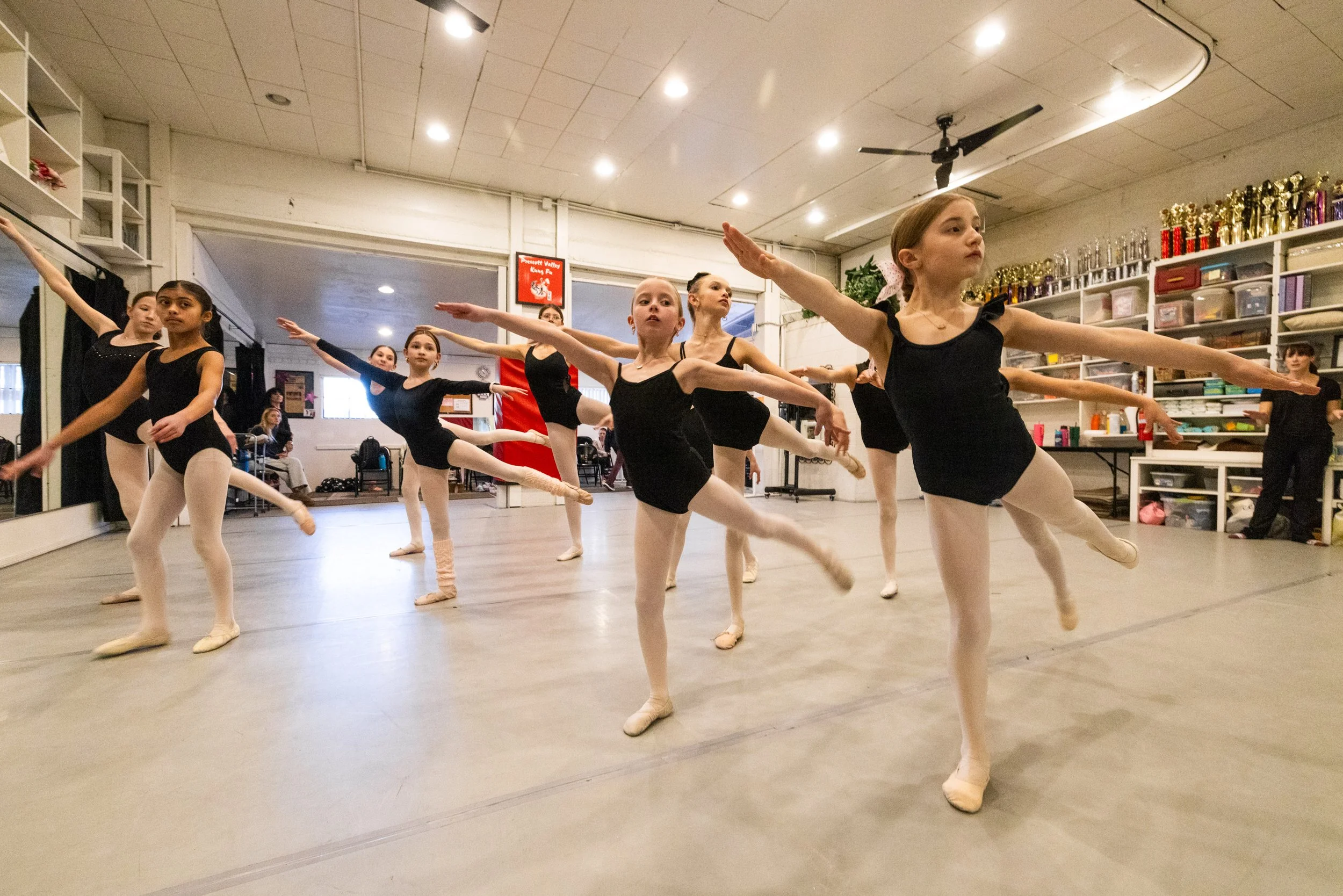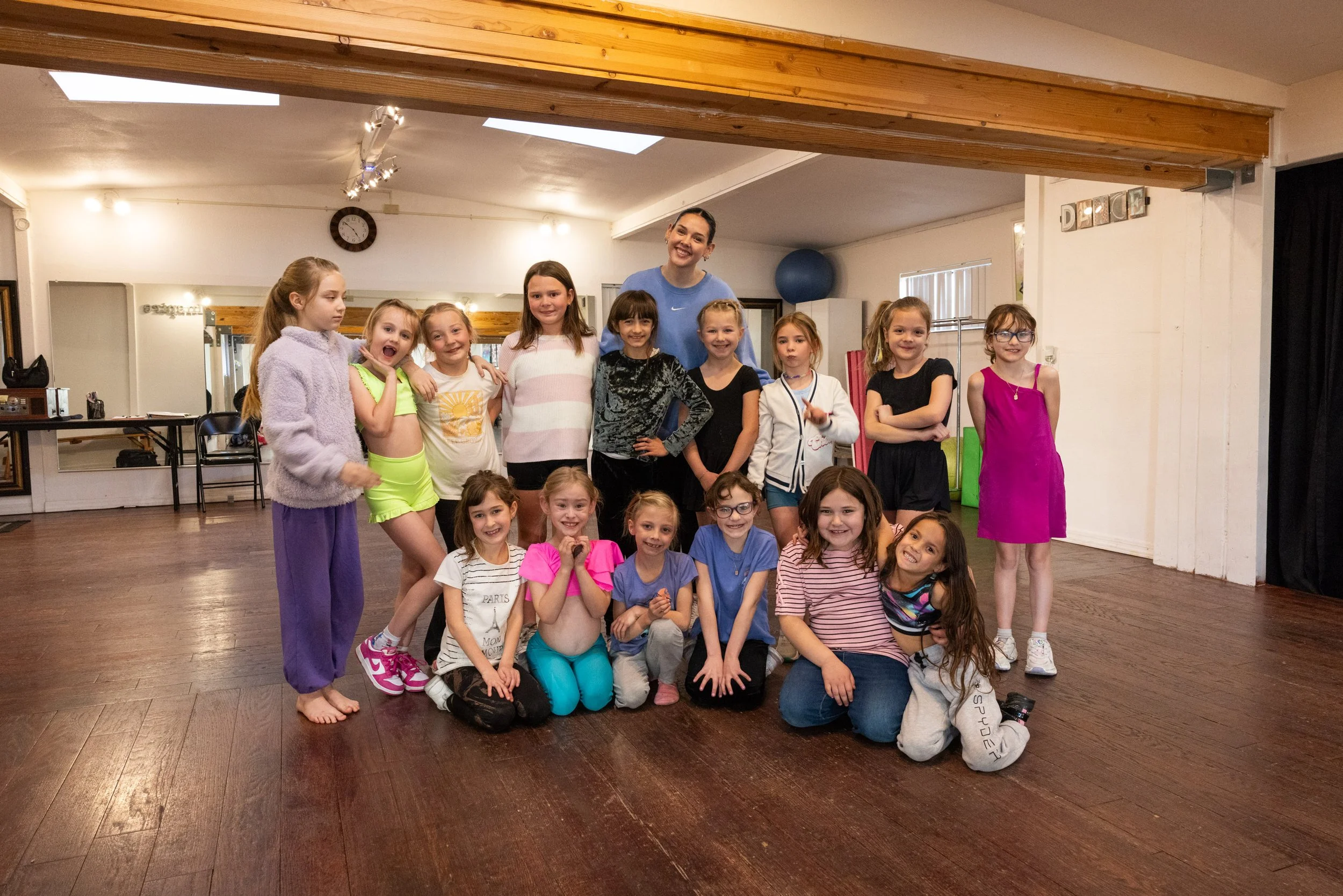Recreational vs. Competitive Dance in Prescott: What Many Parents Get Wrong About Summer’s DanceWorks
Photo: Valerie Fox Photography
If you have children who are interested in dance and live in Prescott, you’ve probably heard it: “Isn’t Summer’s DanceWorks only for competition?” We hear it too—and it’s simply not true. Yes, the studio’s teams are strong and visible. But the day-to-day heartbeat on Miller Valley Road is recreational: once-a-week classes where littles, big kids, teens, and even adults discover that dance can be their happy place—without the travel, fees, and schedule that come with competing.
This guide breaks down the real difference between recreational and competitive dance, why starting recreational is often the best fit for busy Prescott families, and how Summer’s DanceWorks (SDW) structures a welcoming, low-pressure path for kids to try dance, love dance, and—if they choose—grow into more.
Recreational vs. Competitive: the no-drama comparison
Recreational dance = the low-pressure lane. One class per week, age-appropriate technique, lots of smiles, and a recital or showcase to celebrate what kids learned. Think joy + skill-building + community.
Competitive dance = the higher-commitment lane. These include placement or auditions, extra rehearsals, multiple routines, travel, and judged events. It can be fantastic for certain personalities and seasons of life—but it’s not the only way to “do dance.”
At SDW, both exist—and families choose. If your dancer is 4, 7, 10, or 14 and just wants to move, make friends, and build confidence, the recreational track is tailor-made for that. When (and if) your child asks for more, Star Company is there.
Photo: Valerie Fox Photography
How the “SDW is only for competition” myth started
It’s simple visibility. Competition weekends are splashy—costumes, trophies, team photos—and the wins get shared. Meanwhile, the heartbeat of a studio (the once-a-week rec classes) is quieter by design. SDW’s comp teams are successful, but they’re a separate, opt-in pathway that sits on top of a much broader recreational program. Walk the halls on an average weekday and you’ll see Mommy & Me, Hip Hop Hooray, KinderDance, Tap, Ballet, Contemporary, Musical Theater, and more cycling through the rooms. That’s the day-to-day story.
Why start recreational? (Especially in a busy Prescott household.)
Even if your child might compete later, recreational is often the best on-ramp:
It’s age-smart and sustainable. A once-a-week class builds coordination, balance, and musicality without hijacking your calendar. National health guidance links regular physical activity to better heart and lung health, stronger bones, and improved brain health for kids—dance checks those boxes while staying fun.
It’s good for minds and moods. Harvard Health reports that mastering dance sequences may boost memory and problem-solving more than walking, and movement itself supports thinking by improving mood and sleep while lowering stress. That often shows up at home as better focus, resilience, and confidence.
It lets kids explore styles without pressure. Ballet this season, Hip Hop next, Tap after that—recreational schedules make sampling easy. When a child finds “their” style, momentum builds naturally. (SDW’s class menu is intentionally varied so kids can try, pivot, and find a comfortable lane.)
It leaves room for the rest of life. Soccer seasons, piano lessons, and weekend trips don’t have to compete with an intensive training schedule. For most families, that balance is the difference between a one-semester fling and a multi-year love of dance.
It still pays off academically. CDC guidance notes that physical activity supports brain health and thinking for children—including improved cognition and academic performance. Translation: Dance class time isn’t “lost homework time”; it can actually boost the skills kids use in school.
What recreational classes look like at Summer’s DanceWorks
Offerings shift seasonally, but here’s the spirit of the recreational menu families can expect at SDW:
Mommy (Daddy) & Me (20 months+)—A warm, playful intro with music, props, stories, and creative movement—perfect for littles not ready to go solo.
Mini Dance (age 3 & ages 4–5) – Ballet foundations plus rhythm and coordination, often sprinkled with tap and creative movement to keep attention high.
KinderDance (5–7)—A blend of tap, jazz, and ballet with creative movement to finish—great for kids who like a little of everything.
Tap (all ages)—Musicality you can hear—and a blast for kids who love beats and patterns.
Hip Hop / Hip Hop & Jazz (various ages) – Kid-appropriate grooves and stylized combos that build confidence and stage presence.
Hip Hop Hooray (K–1st) – A friendly intro using clean edits of popular songs; creative movement rounds out the last 10 minutes.
Princess/Prince Ballet (K–1st) – A full hour of ballet technique inspired by favorite character music—an inviting doorway into classical form.
Dance Tots (3–5) – Ballet and jazz basics, ending with story acting and free dance.
Musical Theater – Dance meets character and storytelling—ideal for the Broadway/Disney crowd.
Ballet (6–Adult) – The gold-standard technique base that supports every style.
Contemporary & Lyrical—Expressive blends of ballet/jazz/modern that let dancers “move the meaning” of the music.
Partner Dancing (private or special groups)—Swing, Latin, Country, Ballroom—solo or with a partner; the goal is movement + joy.
Note: Pointe is an advancement of ballet technique that’s offered after instructor assessment when a dancer’s strength, alignment, and age are appropriate; it’s not a competition requirement.
The headline isn’t just variety—it’s variety without pressure. Your child can try a style, switch a style, or stick with a favorite once a week and grow on a timeline that fits your family.
Photo: Valerie Fox Photography
“What if my child might want to compete later?”
Great! You don’t have to decide forever on day one. At SDW, the competition track—Star Company—is opt-in after a foundation is built and interest is clear. Many dancers start in recreational classes, add a second weekly technique class (for example Ballet + Jazz or Ballet + Contemporary), and then audition when they’re ready for more rehearsal and team commitments. It’s a ladder, not a leap.
A simple decision tool for Prescott parents
Choose recreational now if your child is:
new to dance,
balancing other activities,
excited to perform but not to be judged,
or loves to try a little bit of everything.
Explore competitive later if your child is:
asking for more studio time,
energized by detailed feedback and goals,
excited about teams and the adrenaline of the stage,
and your family is ready for the time/financial commitment.
Either lane can be right—and you can change lanes as life changes.
What progress looks like (even without medals)
Parents often ask, “If we don’t compete, how will we see progress?”
Look for:
Technique & body awareness—cleaner lines, steadier balances, clearer weight shifts, and more controlled turns.
Musicality & memory—picking up choreography faster, staying on tempo, and remembering longer sequences.
Social-emotional growth—following multi-step directions, collaborating kindly, and bouncing back from mistakes.
Performance presence—telling a story with face and body, not just steps—skills that carry over to school presentations and sports.
Those outcomes mirror what research notes: physical activity supports brain health and thinking skills in children, and the mental stimulation of learning choreography appears to provide extra cognitive benefits. Harvard Medical School and Harvard Health both point to dance’s role in stress reduction, memory support, and new neural connections, especially in regions tied to executive function and spatial recognition.
Photo: Valerie Fox Photography
What your first month will look like
Class 1–2: Getting the lay of the land—studio etiquette, where to put shoes and water, meeting the teacher, and learning a warm-up and a few basic steps. Expect smiles and some wiggles; that’s normal and welcomed.
Class 3–4: You’ll see a small leap—remembered sequences, crisper transitions, and a touch more confidence. If your dancer is still nervous, stick with it; consistency is everything. (And yes, it still counts as “real exercise”—CDC guidance ties even single sessions of moderate-to-vigorous activity to immediate brain-health benefits.) CDC
What makes SDW a strong home for recreational dancers
Experienced, local leadership. Three decades here means Miss Summer understands local rhythms (school calendars, sports seasons) and sets age-appropriate expectations that build confidence first.
Age-smart class design. The ladder from Mommy & Me to KinderDance to leveled Ballet/Tap/Hip Hop gives kids doable steps up—no pressure to “keep up with the competition team.”
A culture of belonging. You’ll see SDW involved in the community through studio updates and showcases—because the studio believes in more than trophies; it believes in being part of Prescott’s fabric.
A clear on-ramp to “more.” When the spark turns into a flame, Star Company is there—audition-based, mentored, and structured for growth. Until then, the recreational path keeps dance joyful and sustainable.
Local note for Prescott families
If you’ve driven past and wondered whether there’s a place for your beginner—there is. SDW’s home base is 805 Miller Valley Rd., Prescott, AZ 86301; the studio phone is (928) 583-7277. Start with one class this season and see how it feels. You can always add a second style later—or keep it simple and let once a week be your child’s creative outlet. The myth stops here.
Credits & further reading
Harvard Medical School: “Dancing and the Brain”—stress, serotonin, and neural connections linked with dance. HMS Harvard
Harvard Health: “Twist, turn, tone”—how mastering dance sequences can boost memory/problem-solving. Harvard Health
CDC: Physical-activity benefits for brain health and children’s cognition/academic performance. CDC





